Waste Products Become Treasure In The Mother Of Pearl Industry
With the fast growing trend favoring sustainably sourced natural products over plastics, finding ways to reduce waste is also a priority.
In the past, the likes of luxury brands and automotive interior design companies have used mother of pearl components mainly for their select appearance.
Today, a new agenda goes with the desire to bring nature into creative designs, with environmental and social responsibilities at the forefront. In a lot of ways, the quest for ethical buying has been more powerful than industry based efforts to source and produce ethically. Unhindered harvesting and trading of mother of pearl had its day, but the industry now faces meticulous scrutiny from renowned buyers like the Louis Vuitton Group.
The next hurdle is... stringent border restrictions! Despite international product codes being agreed to, unlucky parcels are often delayed or lost following overzealous custom controls. It is heartening to see the world improving protective measures against illegal wildlife trading, but not surprising to witness the occasional overpowering effects of regulations.
Rescued From Becoming Waste.
Waste reduction is at the origin of the seashell component industry, which has both economical and environmental advantages.
Most mother of pearl shells are primarily a byproduct of the seafood and pearl industries. Pacific White Mother of Pearls (Pinctada Maxima) and Black Mother of Pearls (Pinctada Margaritifera, mostly known as Polynesian) have been caught in the wild and farmed for their natural pearls: tiny marbles of pure nacre, or calcium carbonate.
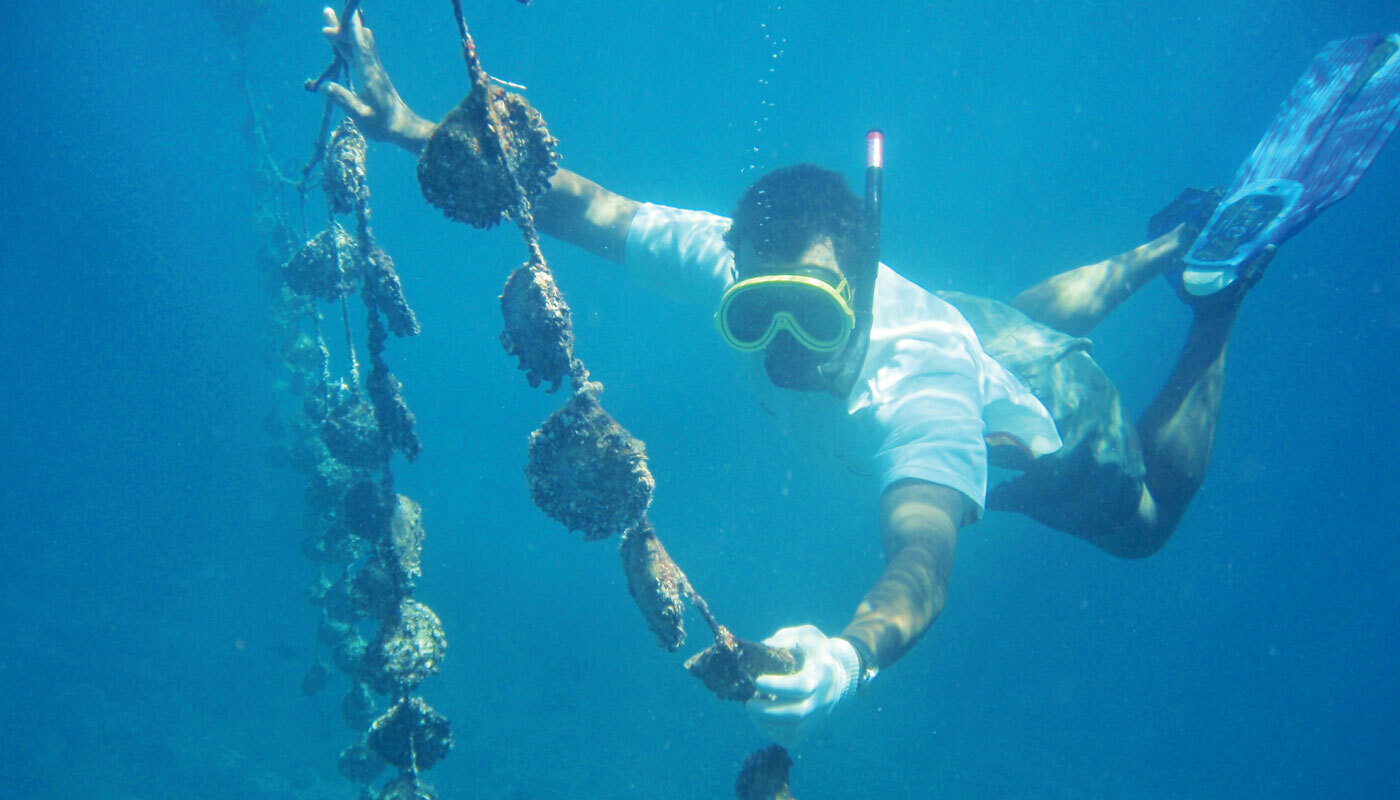
Abalone species worldwide are praised as a delicacy, and even trochus shells are sold on Australian seafood markets for meat consumption.
Discarded from the pearl and seafood industries, Mother of Pearl and Abalone Shells first became a material of choice for the Asian Jewellery industry and European luxury watch making. The Korean "Najeon" technique, featuring highly ornate mother of pearl in wooden furniture inlay, goes as far back as the year 912 (Common Era).
In Modern Times, Diversified Use Means Further Waste Reduction.
In our recent blog post on shell pieces, we have touched on the great variety of tumbled shell sizes and shell chips, but here's a recap of how every part of the shell has become someone's treasure.
Tumbled Shell:
Fine jewelers were the first adopters of handpicked shell pieces for unique jewelry making, but today, many craft designers and makers find value in shell pieces of all sizes and shapes used in resin cast objects, candles, trays, coasters, wall art and much more. The most popular shell pieces are NZ Abalone Paua, Chinese Freshwater Mother Of Pearl, Pink Mussel of the Mississippi, Black Mother of Pearl, and White Mother of Pearl.
For A long time, very little use was made of Abalone -Paua- rims...until imaginative artists and jewelers found some innovative uses for them:
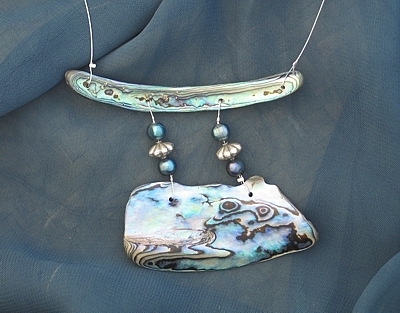

Shell Chips from Crushed Shells
Lower grade shells still have iridescent colours, providing unique glitter for swimming pool renovations and polished concrete making. The 2 main shell species here are the New Zealand Abalone Paua and the Trochus chips. In the case of trochus and Black Mother of Pearl, chips are made from reject of button making factories.
Trochus is the most commonly used shell for button making, but the top part of the shell is not suitable for buttons, due to its cone shape.
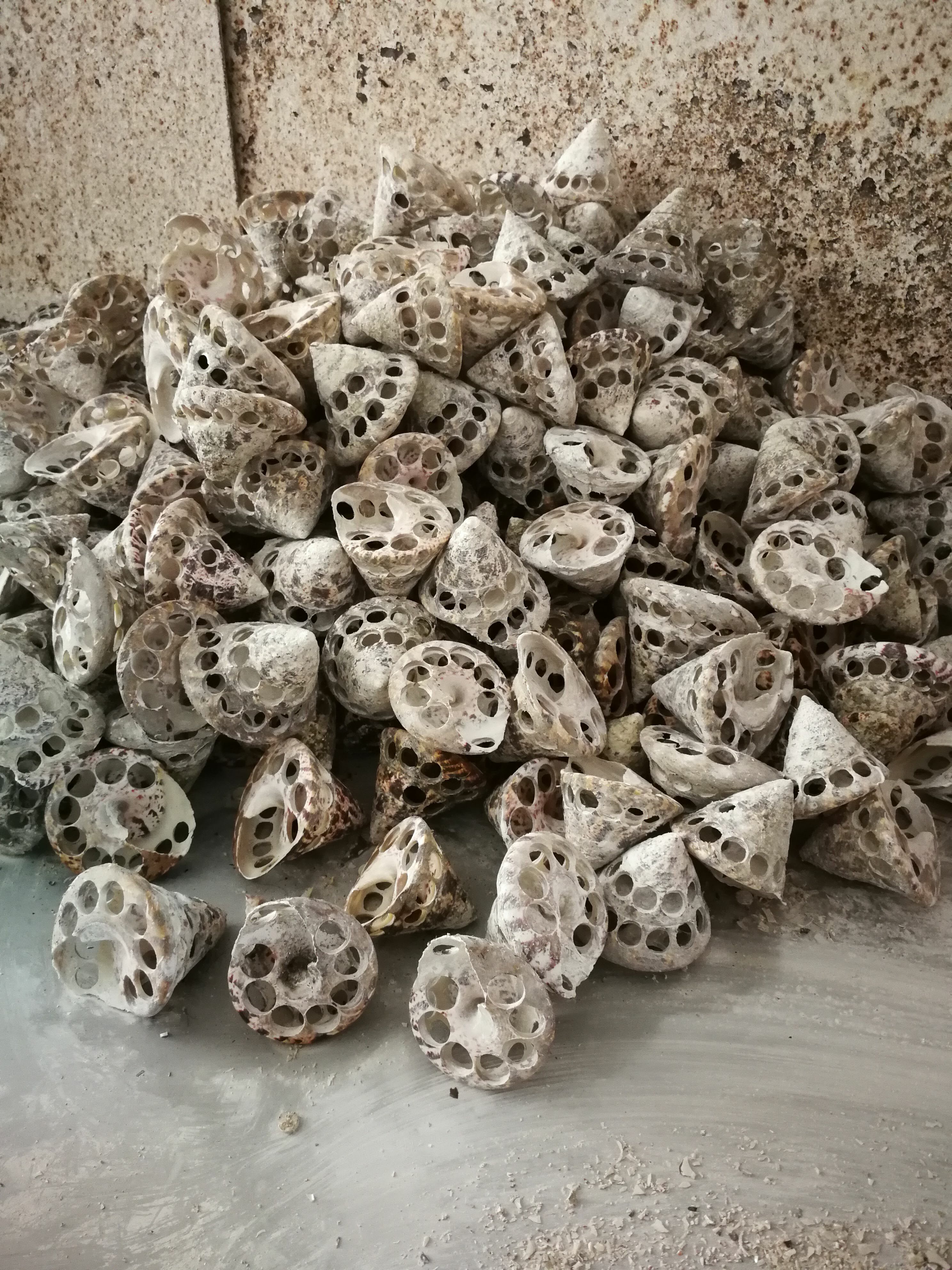
Black Mother of Pearl , also a favorite for button making, produces waste for shell blanks and tumbled shell pieces as well as chips.
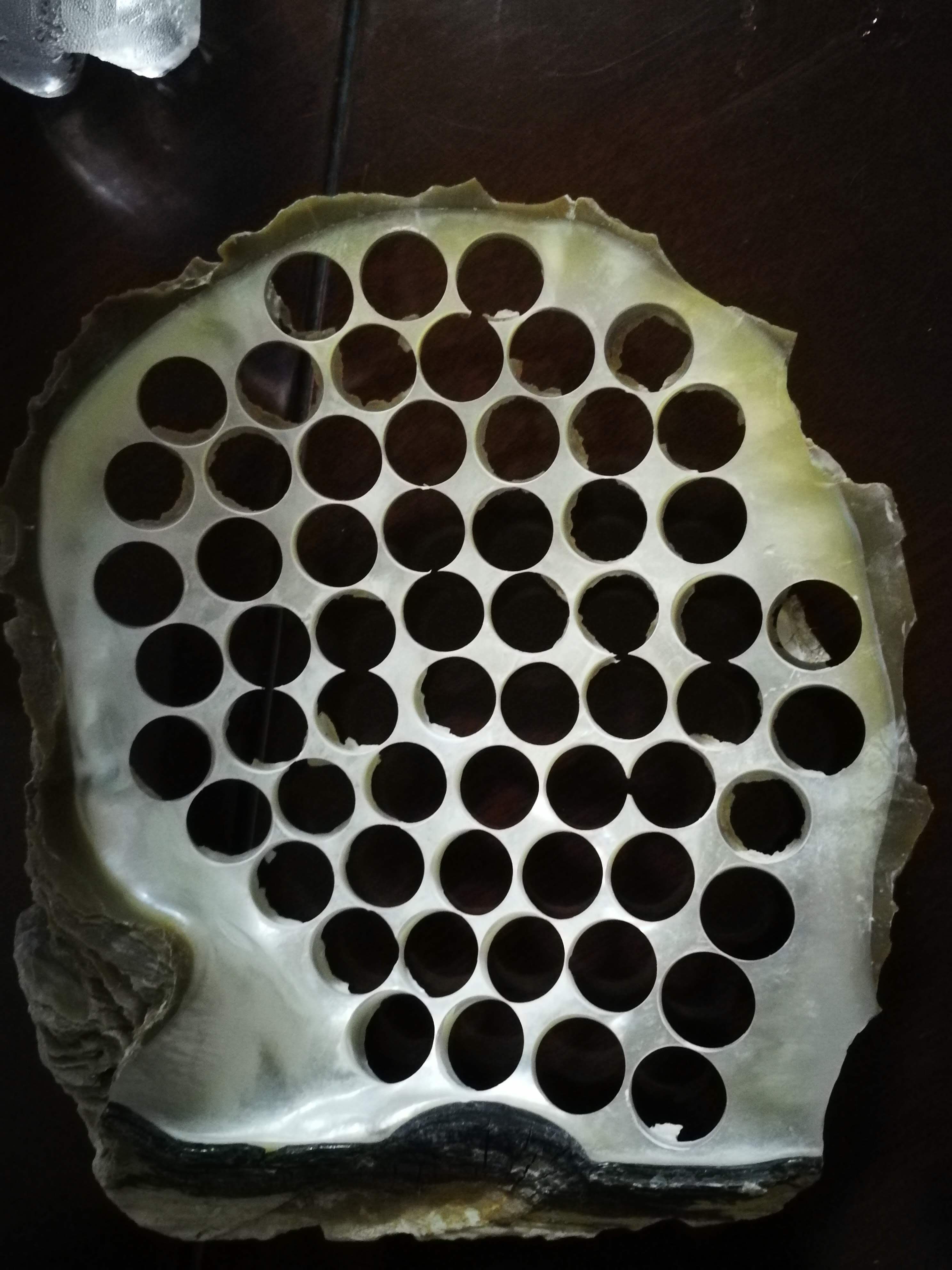
Shell Chips in Various Sizes and Colours.
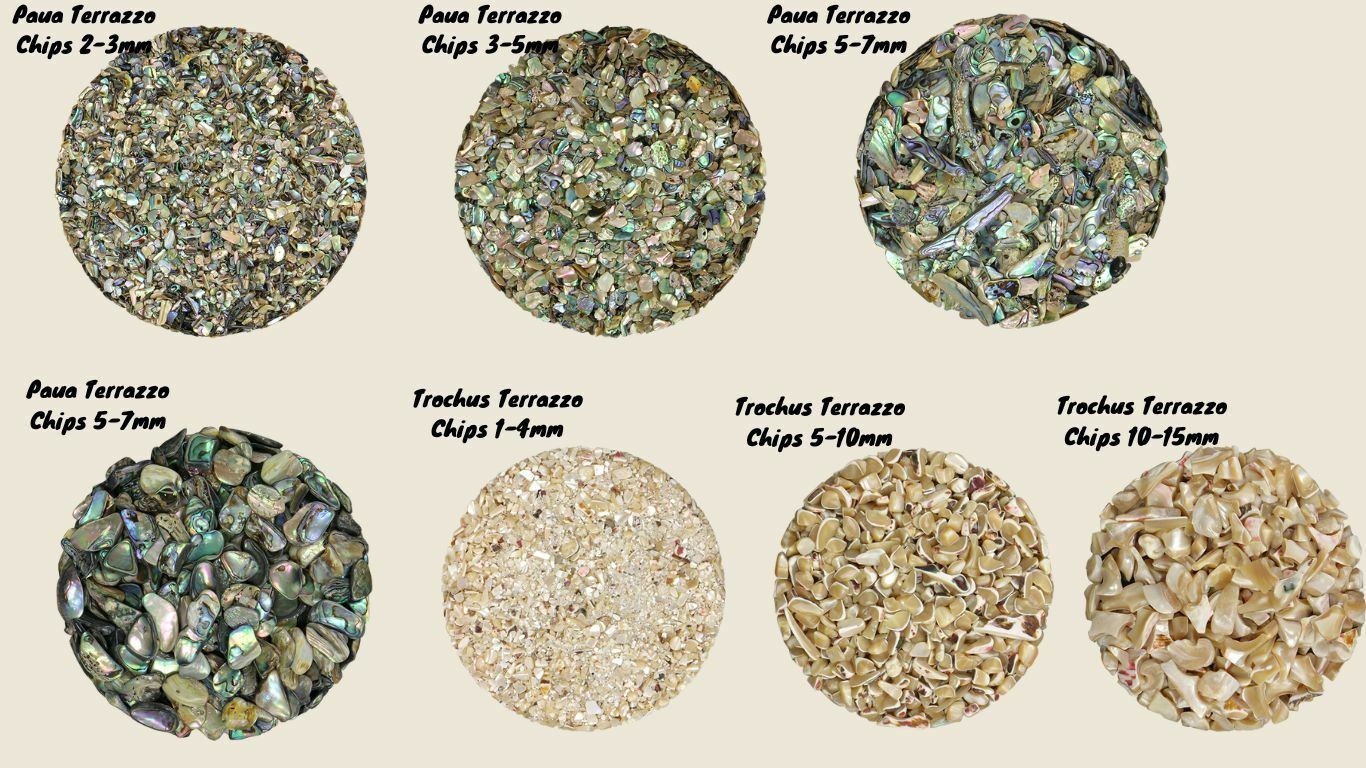
Shell Powder, The Ultimate Waste Reducer and a Growing Industry
Sea shell powder is well known for its benefits in multiple domains. It is subject to ongoing scientific studies for further and more diversified utilization. Over the years, Oceanshell Ltd has been involved in supplying raw shell material to produce shell powder for businesses and laboratories.
Some of the interesting uses are:
- In cosmetics and personal care as an exfoliator and additive to cosmetics.
- Dietary supplements as a pure source of calcium for bone strengthening and other benefits still being researched.
- In agricultural fertilizing.
- In waste water treatment, where seashell powder is known to absorb nutrients and pollutants.
- Increasing shelf life for meat products like poultry, Sausages etc...
- Supplement in animal foods.
- Pharmaceuticals, with some of the benefits still being confirmed through research.
- Seashell Powder is also a promising ingredient for 3D printing!
From being a useful waste product in the first place, the Mother of Pearl shell industry is constantly looking at ways to reduce and use its own waste by helping industries and users make the most of every part of the shell. This goes hand in hand with efforts to protect Mother of Pearl fisheries worldwide, with the aim to attain fully sustainable sourcing and harvesting.
Tell us about your project...
Your project is unique, so we provide personalised advice before delivering worldwide from our studio in New Zealand.
Luméa products are made from natural shell with a variety of factors that affect form and function. If you can’t find the right product from within our range, then talk to us about our custom design service. We love to experiment and collaborate with our partners to create unique solutions.